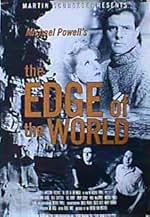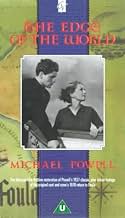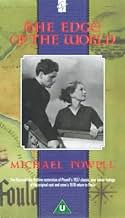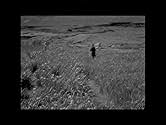IMDb RATING
7.3/10
2.3K
YOUR RATING
A way of life is dying on a remote Scottish island, but some of the inhabitants resist evacuating to the mainland.A way of life is dying on a remote Scottish island, but some of the inhabitants resist evacuating to the mainland.A way of life is dying on a remote Scottish island, but some of the inhabitants resist evacuating to the mainland.
- Director
- Writers
- Stars
- Awards
- 1 win & 1 nomination total
Niall MacGinnis
- The Gray Family: Andrew, His Son
- (as Niall Macginnis)
Andy Gear
- Villager in Evacuation
- (uncredited)
Mima Gear
- Villager in Evacuation
- (uncredited)
Wullie Gear
- Fiddler at Hirta Reel
- (uncredited)
Aggie Jean Gray
- Member of the Congregation
- (uncredited)
Agnes 'Nannie' Gray
- Member of the Congregation
- (uncredited)
Edith Gray
- Member of the Congregation
- (uncredited)
James Andrew Gray
- Member of the Congregation
- (uncredited)
Jean 'Jeannie' Gray
- Member of the Congregation
- (uncredited)
- Director
- Writers
- All cast & crew
- Production, box office & more at IMDbPro
Featured reviews
A new version was reportedly released in 1978 ,featuring a color sequence where the director and the actors-survivors went on a pilgrimage to Foula.It was called "return to the edge of the world" .This is not the version I saw and it seems that none of the other users could see it either.It's really a pity.
Powell is my favorite English director.He's the only one who 's got a sense of mystery.His pictures are art,poetry in motion.He films the sea (a harsh mistress) and the desolate landscapes in a dazzling way.His influence on David Lean ("Ryan's daughter") is obvious.But I'm almost sure old wave French Jean Delannoy (not meant pejoratively) had this movie in mind when he made his own "Dieu a Besoin des Hommes" (a story in a remote Breton island ).And the almost documentary side of the movie predates Robert Bresson's asceticism.
Some called it melodramatic:on the contrary,Powell avoids its clichés; the unmarried mother became generally an outcast,most of all the French Marcel Pagnol films revolved around this subject.But Ruth's child is a new hope for the inhabitants.The sequence when they dance to a violin tune is the one really happy moment in the whole film.
The times are changing.The way of life their fathers used to know is coming to an end.Powell's movie gains an universal meaning :the situation he depicted happened (and is still happening) here there and everywhere.
Powell is my favorite English director.He's the only one who 's got a sense of mystery.His pictures are art,poetry in motion.He films the sea (a harsh mistress) and the desolate landscapes in a dazzling way.His influence on David Lean ("Ryan's daughter") is obvious.But I'm almost sure old wave French Jean Delannoy (not meant pejoratively) had this movie in mind when he made his own "Dieu a Besoin des Hommes" (a story in a remote Breton island ).And the almost documentary side of the movie predates Robert Bresson's asceticism.
Some called it melodramatic:on the contrary,Powell avoids its clichés; the unmarried mother became generally an outcast,most of all the French Marcel Pagnol films revolved around this subject.But Ruth's child is a new hope for the inhabitants.The sequence when they dance to a violin tune is the one really happy moment in the whole film.
The times are changing.The way of life their fathers used to know is coming to an end.Powell's movie gains an universal meaning :the situation he depicted happened (and is still happening) here there and everywhere.
If I had to name one of my favourite film directors, a few always come to mind, and they always include Michael Powell. He has made some of the (for me) most fascinating, thrilling, strange, intriguing and often exhilarating movies ever. He has made about 60 films in about 40 years and plenty of them would easily fit into my all time favourite top-10 films: The Red Shoes, Black Narcissus, The Life and Death of Colonel Blimp, Peeping Tom, Gone To Earth, A Canterbury Tale, 49th Parallel, One of Our Aircraft is Missing, A Matter of Life and Death, I Know Where I'm Going, Contraband, A Spy in Black - I can recommend them all as essential viewing if you are interested in English cinema of the 1940s and 1950s. Now the Arts Channel (in New Zealand) decided to screen one I hadn't seen before, The Edge of the World, from 1937. A tragic and powerful tale of an isolated island off the coast of Scotland (in Roman times known as Ultima Thule, the island of Foula standing in for St Kilda) affected by diminishing local resources of fuel and manpower, causing emigration, economic, social and environmental decline. It was fascinating and moving to see the stories of local families intertwined with the larger social and economic issues driving change. A constant recurrence of a cinematic theme throughout the film was gravity, which of course pulls everything down: people and sheep falling off cliffs, the pull of the wider world out there affecting the economic base of the island, fishing, livestock and crofting. The camera angles are fascinating throughout as every scene is filmed either from a upward or downward position, emphasising the will of men to fight for what they want and believe in, or being looked on by the camera acting as mother nature overwhelming the actors by the majestic cliffs, pounding seas and constant winds. You'd wish there could have been another outcome for the people involved but in the end it seems it's not possible to live at the edge of the world: you either choose to leave or die on the island.
After six years slumming it in the so-called "quota quickies" (cheap films made to satisfy a domestic produce law), this was Michael Powell's first personal and independent production. It is the beginning of his love affair with the Scottish isles, his partnership with a number of distinguished actors and crew members, and demonstrates the rhythmic style that would become his trademark.
The first thing that stands out about Edge of the World is its documentary feel. The story itself is a fairly brief tale, but Powell bulks out the runtime by showing off the natural beauty and detailing the vanishing ways of life. It's not something Powell would do a lot in his later career, but it shows his reverence for the subject matter, and also an unbridled state of his purely visual form of storytelling. This is as far as I know the only one of his films for which Powell took sole screen writing credit. Film as a purely visual narrative was his aesthetic, and you could probably fit all the dialogue on about half a dozen pages of script. While the imagery is consistently strong, Powell would generally make better films when his personality was balanced out by the powerful screenplays of Emeric Pressburger.
However, thanks to the lack of dialogue we really get a taste of Powell's sensitivity to rhythm. The steady flow of images that set each scene is reminiscent of early DeMille, which occasionally give way to snappier, almost Hitchcockian editing patterns for the tenser moments. Of course an honourable mention must go to editor Derek Twist for collating all the images for maximum effect. Two scenes are directed with incredible tenderness by Powell. First is the funeral, shot through a mist like effect which enhances the sombre tone. The second is the moment where John Laurie finds out his daughter is pregnant. Tension is built up only to be released with a surprisingly humane response from Laurie. There are still one or two touches of clumsiness, where the angling of shots makes it a bit confusing who is where for example when Eric Berry and Belle Chrystall watch Niall MacGinnis wandering dangerously near the cliff edge. This could be down to inexperience, or it could simply be due to the on-the-fly nature of the production. After all, how do you view your rushes when your stuck on a little island? Whatever the case, such problems would not recur in Powell's work.
The only real sour note in Edge of the World is, unfortunately, the acting. While Finlay Currie gives his usual steadiness to the proceedings, and of course John Laurie is of course good whenever you need a slightly exaggerated, wild-eyed Scot (although this is in fact one of his deepest performances), the general standard is poor. No-one else really stands out, and surprisingly the young Niall MacGinnis is absolutely appalling. With his inability to master the accent and, it would appear, the general concept of acting, he here looks as if he just walked off the set of Brigadoon.
Overall though this is a gripping and haunting work. It may occasionally be a little rough around the edges, and is often a bit too showy, but you can see in this little film that this is the man who would one day turn opera into cinematic spectacle. This is essential viewing for all fans of Michael Powell.
The first thing that stands out about Edge of the World is its documentary feel. The story itself is a fairly brief tale, but Powell bulks out the runtime by showing off the natural beauty and detailing the vanishing ways of life. It's not something Powell would do a lot in his later career, but it shows his reverence for the subject matter, and also an unbridled state of his purely visual form of storytelling. This is as far as I know the only one of his films for which Powell took sole screen writing credit. Film as a purely visual narrative was his aesthetic, and you could probably fit all the dialogue on about half a dozen pages of script. While the imagery is consistently strong, Powell would generally make better films when his personality was balanced out by the powerful screenplays of Emeric Pressburger.
However, thanks to the lack of dialogue we really get a taste of Powell's sensitivity to rhythm. The steady flow of images that set each scene is reminiscent of early DeMille, which occasionally give way to snappier, almost Hitchcockian editing patterns for the tenser moments. Of course an honourable mention must go to editor Derek Twist for collating all the images for maximum effect. Two scenes are directed with incredible tenderness by Powell. First is the funeral, shot through a mist like effect which enhances the sombre tone. The second is the moment where John Laurie finds out his daughter is pregnant. Tension is built up only to be released with a surprisingly humane response from Laurie. There are still one or two touches of clumsiness, where the angling of shots makes it a bit confusing who is where for example when Eric Berry and Belle Chrystall watch Niall MacGinnis wandering dangerously near the cliff edge. This could be down to inexperience, or it could simply be due to the on-the-fly nature of the production. After all, how do you view your rushes when your stuck on a little island? Whatever the case, such problems would not recur in Powell's work.
The only real sour note in Edge of the World is, unfortunately, the acting. While Finlay Currie gives his usual steadiness to the proceedings, and of course John Laurie is of course good whenever you need a slightly exaggerated, wild-eyed Scot (although this is in fact one of his deepest performances), the general standard is poor. No-one else really stands out, and surprisingly the young Niall MacGinnis is absolutely appalling. With his inability to master the accent and, it would appear, the general concept of acting, he here looks as if he just walked off the set of Brigadoon.
Overall though this is a gripping and haunting work. It may occasionally be a little rough around the edges, and is often a bit too showy, but you can see in this little film that this is the man who would one day turn opera into cinematic spectacle. This is essential viewing for all fans of Michael Powell.
Michael Powell is best known for the films he made with Emeric Pressburger under the brand name "The Archers", but "The Edge of the World" from 1937 is a solo project, predating his partnership with Pressburger. It was inspired by the evacuation of the remote Scottish archipelago of St Kilda in 1930. Here the island is named "Hirta", which is the same name as that of the main island of the St Kilda group, but it is relocated from the Hebrides to the Orkneys or Shetlands. (Permission to film on St Kilda itself was refused, so filming actually took place on Foula in the Shetlands, although that island was, and remains to this day, inhabited).
A wealthy young couple, sailing around Scotland by yacht, arrive on the island where they discover abandoned cottages but no human inhabitants. They ask Andrew Gray, the skipper of their yacht and himself a native of the island, what happened, and he explains that the island has been deserted for ten years. He then tells them the story of how the population came to leave. The islanders were divided among themselves; some, including Andrew himself, wanted to stay whereas others, such as his close friend Robbie Manson, wanted to leave. Even families were split; Andrew's father James sided with Robbie, whereas Robbie's father Peter and his sister Ruth (who was also Andrew's sweetheart) were both among those determined to stay.
The story told here is partly based upon the true story of the evacuation of St Kilda and is partly fictitious. As on the real St Kilda, the main factor which is drawing people away from the fictitious island of "Hirta" is the greater employment opportunities offered to young people on the mainland. There is also the fact that there are no medical facilities on the island. The people of Hirta are also concerned that competition from commercial trawlers is damaging the local fishing industry. (This was not a factor on the real St Kilda, where the rough and perilous seas meant that the local people did little fishing). As the younger generation gradually leave, this makes it more difficult for those remaining to follow their traditional way of life which relies on strong, fit young people to help with the fishing and crofting and to gather sea birds' eggs from the cliffs. (This was an important source of protein in their diet).
Powell, born in Canterbury, may have been a native of southern England, but had a deep love of the Scottish highlands and islands; two of his later films with Pressburger, "The Spy in Black" and "I Know Where I'm Going!" were also set in the area. "The Edge of the World" can be seen as his tribute to the way of life of the local people, a life which Powell and his cast and crew shared for several months while on Foula. (No air service or regular ferry existed in 1937, meaning that they had to stay on the island for the whole length of the shoot).
While "The Edge of the World" tells a fictional story, it has a documentary feel to it, reminiscent of the documentary shorts such as "The Islanders" which were being produced by the GPO Film Unit around the same time. At this period life on remote islands was hard and lonely; the islanders of Foula, like those of St Kilda, had no gas, electricity or running water. They had never seen a car, an aircraft or even a bicycle. There were no radios and no postal service; their only way of communicating with the outside world was to launch a letter into the sea in a small wooden vessel, hoping it would be picked up by a passing ship. (They make use of this method during the film). The characters in the film refer to the mainland as "Scotland", as through Scotland were somewhere foreign, not the country where they live.
Powell shows us not only the hardships and dangers of their life but also their simple religious faith, their democratic ways (all decisions of importance are taken by an island Parliament) and their independent spirit. He also captures, in some striking black- and-white photography, the austere natural beauty of the island. The film may not have the complexity of some of his "Archers" films, but it has a beauty, a tragic power and a poetic simplicity which make it unusual in the annals of British film-making, matched in these respects perhaps only by Bryan Forbes' "Whistle Down the Wind". 9/10
A goof. The main story is said to have happened ten years ago, presumably in 1927, but the characters refer to the evacuation of St Kilda, which did not occur until 1930.
A wealthy young couple, sailing around Scotland by yacht, arrive on the island where they discover abandoned cottages but no human inhabitants. They ask Andrew Gray, the skipper of their yacht and himself a native of the island, what happened, and he explains that the island has been deserted for ten years. He then tells them the story of how the population came to leave. The islanders were divided among themselves; some, including Andrew himself, wanted to stay whereas others, such as his close friend Robbie Manson, wanted to leave. Even families were split; Andrew's father James sided with Robbie, whereas Robbie's father Peter and his sister Ruth (who was also Andrew's sweetheart) were both among those determined to stay.
The story told here is partly based upon the true story of the evacuation of St Kilda and is partly fictitious. As on the real St Kilda, the main factor which is drawing people away from the fictitious island of "Hirta" is the greater employment opportunities offered to young people on the mainland. There is also the fact that there are no medical facilities on the island. The people of Hirta are also concerned that competition from commercial trawlers is damaging the local fishing industry. (This was not a factor on the real St Kilda, where the rough and perilous seas meant that the local people did little fishing). As the younger generation gradually leave, this makes it more difficult for those remaining to follow their traditional way of life which relies on strong, fit young people to help with the fishing and crofting and to gather sea birds' eggs from the cliffs. (This was an important source of protein in their diet).
Powell, born in Canterbury, may have been a native of southern England, but had a deep love of the Scottish highlands and islands; two of his later films with Pressburger, "The Spy in Black" and "I Know Where I'm Going!" were also set in the area. "The Edge of the World" can be seen as his tribute to the way of life of the local people, a life which Powell and his cast and crew shared for several months while on Foula. (No air service or regular ferry existed in 1937, meaning that they had to stay on the island for the whole length of the shoot).
While "The Edge of the World" tells a fictional story, it has a documentary feel to it, reminiscent of the documentary shorts such as "The Islanders" which were being produced by the GPO Film Unit around the same time. At this period life on remote islands was hard and lonely; the islanders of Foula, like those of St Kilda, had no gas, electricity or running water. They had never seen a car, an aircraft or even a bicycle. There were no radios and no postal service; their only way of communicating with the outside world was to launch a letter into the sea in a small wooden vessel, hoping it would be picked up by a passing ship. (They make use of this method during the film). The characters in the film refer to the mainland as "Scotland", as through Scotland were somewhere foreign, not the country where they live.
Powell shows us not only the hardships and dangers of their life but also their simple religious faith, their democratic ways (all decisions of importance are taken by an island Parliament) and their independent spirit. He also captures, in some striking black- and-white photography, the austere natural beauty of the island. The film may not have the complexity of some of his "Archers" films, but it has a beauty, a tragic power and a poetic simplicity which make it unusual in the annals of British film-making, matched in these respects perhaps only by Bryan Forbes' "Whistle Down the Wind". 9/10
A goof. The main story is said to have happened ten years ago, presumably in 1927, but the characters refer to the evacuation of St Kilda, which did not occur until 1930.
An interesting film and well worth seeing for those interested in Scottish theme films. The comparison with Man of Aran is valid, in that it depicts an isolated island community struggling to eke out an existence.
What was missing for me was even a hint at the language these island people of "Hirta" would have spoken, Scottish Gaelic. The church scene with its psalm singing was executed better than in "The Little Minister", but still without making an effort to portray the real thing. The singing was in English, using a Lowland style and the precentor did not chant the line, but read it! They had clearly not visited any Highland churches before preparing the scene.
The documentary film, appended to this, "Return to the Edge of the World" was wonderful and I found it equally enjoyable.
What was missing for me was even a hint at the language these island people of "Hirta" would have spoken, Scottish Gaelic. The church scene with its psalm singing was executed better than in "The Little Minister", but still without making an effort to portray the real thing. The singing was in English, using a Lowland style and the precentor did not chant the line, but read it! They had clearly not visited any Highland churches before preparing the scene.
The documentary film, appended to this, "Return to the Edge of the World" was wonderful and I found it equally enjoyable.
Did you know
- TriviaIn the scene of the race up the cliffs, the actors did their own climbing. According to director Michael Powell's book on the making of the film, Eric Berry in particular did some risky work indeed, especially in the shots of him clambering up the waterfall.
- GoofsThe wild Golden Eagle at the beginning has the falconer's jesses (leather straps) visible.
- Quotes
The Gray Family: Andrew, His Son: Do you think I don't care about Robbie? Do you think I'd forget that he was your twin brother and my best friend?
- Crazy credits[before opening credits] The slow shadow of Death is falling on the outer isles of Scotland. [scrolls up] This is the story of one of them -- and all of them. When the Roman Fleet first sailed round Britain they saw from the Orkneys a distant island, like a blue haze across a hundred miles of sea. They called it - "ULTIMA THULE" [main title] THE EDGE OF THE WORLD
- ConnectionsFeatured in Return to the Edge of the World (1978)
- SoundtracksChorus
(uncredited)
Composer unknown
Performed by The Glasgow Orpheus Choir
Conducted by Hugh S. Roberton
- How long is The Edge of the World?Powered by Alexa
Details
Box office
- Budget
- £20,000 (estimated)
- Runtime
- 1h 21m(81 min)
- Color
- Aspect ratio
- 1.37 : 1
Contribute to this page
Suggest an edit or add missing content

























